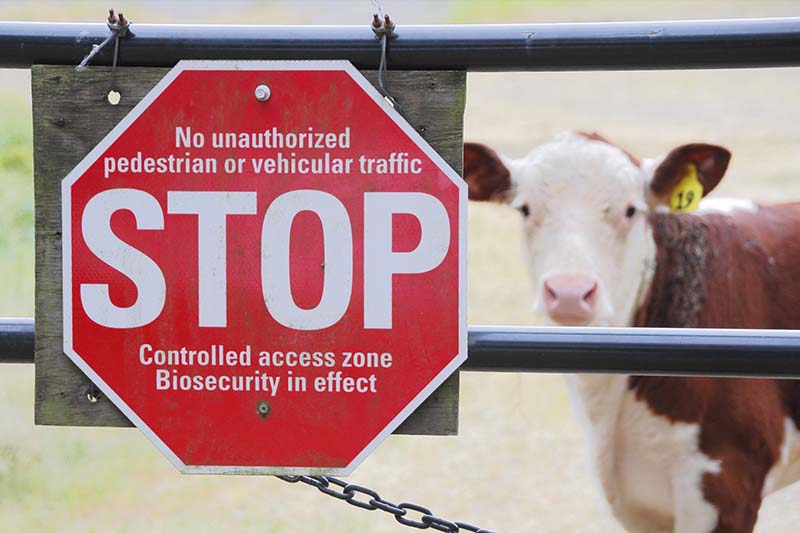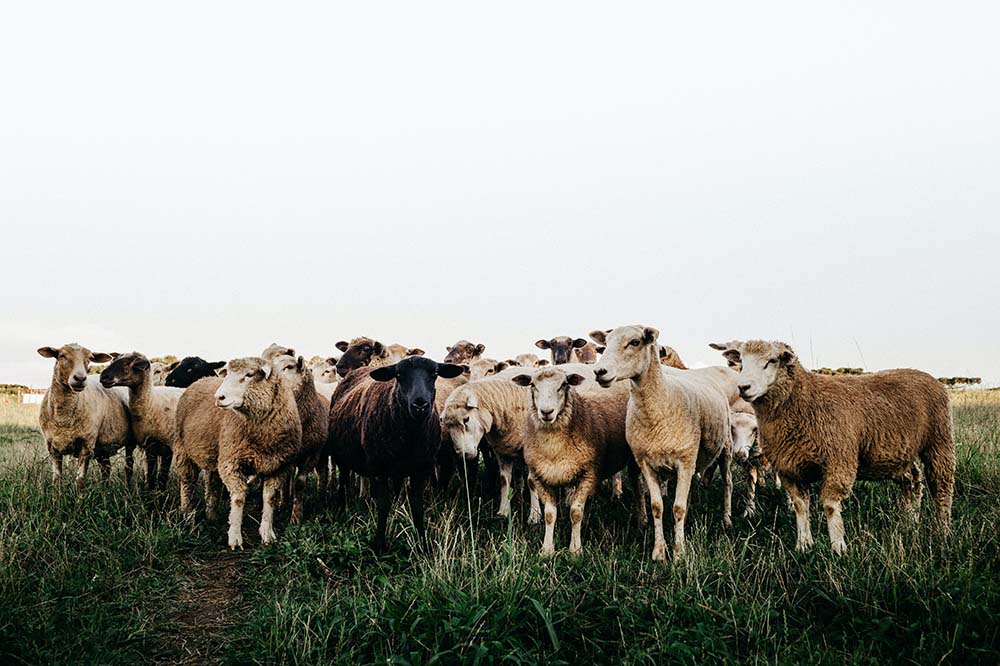As our Indonesian neighbours face a Foot and Mouth Disease (FMD) outbreak, Australia is gearing up for the possibility of the viral disease reaching our shores for the first time in over a century.
While FMD doesn’t affect humans, it causes painful blisters on the mouth and feet of cloven-hoofed livestock such as cattle, sheep and pigs, and can be lethal for young animals.
 With past overseas outbreaks having led to the mass culling of infected in affected zones and non-infected animals in buffer zones, UNE Professor of Animal Behaviour and Welfare, Dr Paul McGreevy, says if it were to come to Australia, there would be devastating impacts.
With past overseas outbreaks having led to the mass culling of infected in affected zones and non-infected animals in buffer zones, UNE Professor of Animal Behaviour and Welfare, Dr Paul McGreevy, says if it were to come to Australia, there would be devastating impacts.
The environmental, human and animal welfare toll
“There will be significant animal welfare implications if FMD arrives; a prospect that is truly terrifying,” he says.
“There will also be profound implications for veterinary and biosecurity personnel, and, with large numbers of carcasses to dispose of, there would be environmental impacts.
“This is the so-called ‘triple bottom line’ that underpins UNE’s interest in the novel One Welfare framework, which is a concept highlighting the interconnections between animal welfare, human wellbeing and the environment.”
What would it mean for the economy?
In addition to the welfare and environmental impacts, economists predict an outbreak would have long-lasting consequences on the economy and the country’s ability to export meat products to certain areas around the globe.
“ABARES modelling from several years ago suggests that a large, multi-state outbreak of FMD outbreak in Australia would have an estimated direct economic impact of around $50 billion over 10 years. With rising prices of meat, this has become around $80 million,” says UNE Associate Professor in Biosecurity Economics, Dr Susan Hester.
“This is estimated to be mainly due to the cost of lost trade, although it does include some costs of responding."
 A/Prof Hester, who works in the UNE Business School and the Centre of Excellence for Biosecurity Risk Analysis at the University of Melbourne, has spent the past two decades researching how to reduce the impacts of biosecurity threats, and says an outbreak would be felt widely.
A/Prof Hester, who works in the UNE Business School and the Centre of Excellence for Biosecurity Risk Analysis at the University of Melbourne, has spent the past two decades researching how to reduce the impacts of biosecurity threats, and says an outbreak would be felt widely.
Trade bans and tourism
Reduced tourism, mental health impacts for those who administer and witness stock culls, and a change in what we pay at the grocery store, are all things to look out for if FMD were to spread.
“We would likely lose our access to premium meat export markets, and our products would be banned from those countries until FMD can be proven to have been eradicated from Australia,” she says.
“Given we export much more meat than we consume, if all the meat that we currently export was to be consumed in the domestic market, then prices would fall, although, if large quantities of animals had to be destroyed and did not become part of the supply chain, then prices could eventually rise.
“It really does depend on where the outbreak occurs, its size and how quickly it can be contained and eradicated.”
The road to recovery
As for how long it could take for Australia to recover from an FMD outbreak, A/Prof Hester says there are many factors at play.
“To regain FMD‐free status for trade, a country must wait three to six months after eradication, depending on the eradication strategy used. This comes on top of the time it takes to eradicate, which could be over a year.
“It depends on the size of the outbreak when it is first detected, and how many different outbreaks occur. Recovery would likely take a long time where there are many outbreaks and they are not discovered until they have spread widely.”

Image: A/Prof Hester says if FMD were to reach our shores, Australian meat exports would be limited.
Australia’s biosecurity measures - our saving grace?
While the prospect of an outbreak is troubling, A/Prof Hester says Australia is well-equipped to keep a disease like this off our shores if biosecurity measures are adhered to.
“Australia has invested heavily for many decades in activities aimed at preventing FMD from entering and in planning and preparedness activities in the event FMD were detected here.
“We assist our near neighbours in the South-East Asian region to manage FMD, we have strong border risk-mitigation measures, and post-border, we have the ability to respond quickly to control and eradicate the disease. We have livestock tracing systems that  would be used in the event of an outbreak, and there have also been various ‘practices’ at responding to an outbreak.”
would be used in the event of an outbreak, and there have also been various ‘practices’ at responding to an outbreak.”
What can be learnt from past threats?
As for what can be learnt from other threats we’ve seen in the past, A/Prof Hester says there is a lot to be gained from taking human behaviour into account when developing biosecurity measures.
“Human behaviour is crucially important to consider when we design the biosecurity rules and regulations that govern the import of cargo, passengers and mail items and the behaviour of domestic biosecurity stakeholders (all of us!) - COVID is a case in point.
“We need to focus on creating rules that these stakeholders will obey by choice, rather than creating rules that are likely to be circumvented, which will cost a lot of money to monitor, and which could make any outbreak worse than it might have been.”
For more information on FMD, visit the Australian Department of Agriculture, Fisheries and Forestry website.


